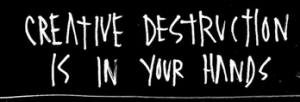Innovation is a long hard and tough journey. Regretfully we do ourselves no favours in not having a common language, a repository of proven techniques and methodologies.
We often continue to layer on to the existing often failing to consolidate and validate.
I get frustrated as you look around there are most of the answers but not the ‘attention span’ or the real incentive to go and properly learn it, to master it.
We lack discipline in innovation although that might sound counter to the way innovation is often presented. The art of innovation needs to be broken out of the science that needs to be applied………
This was how I started in a reply to an email sent by Ralph-Christian Ohr (@ralph_ohr). He was commenting on my recent series on the Three Horizon framework, I had collated and sent this to him and Tim Kastelle (@timkastelle) to comment upon.
This had been updated recently and published in the site of www.innovationexcellence.com over five days recently.
Ralph clearly caught me in a reflective mood when I replied.
We travel a long pathway called innovation Continue reading “The long and winding road we travel in the name of innovation”


